Here is a little history and tutorial on “Gruit” the once common ancient beverage of Germanic-speaking lands. Sometimes, the best way to think about the cultural past is to taste it. Brewing historical ale is one of the most rewarding ways to do this.
History Hidden in the Weeds
You would be surprised on how many forgotten aspects to our cultural past lies hidden in things as mundane as the humble weeds. Here is what I have learned about one of them:
Ground-ivy, Glechoma hederacea, also known as creeping-charlie, is one of those common yard weeds easily recognized by most. The self-respecting modern suburbanite views it as one of those infamous weeds hell-bent on marring one’s perfectly monocultural and utterly useless lawn. However, this little plant has a forgotten, but interesting past relationship with our ancestors. The first clue to this past comes from an older name for it–alehoof. Apprently, it was long used for brewing ale.
Before beer became hoppy, folk drank “Gruit”
Our perception of what beer should taste like nowadays owes much to the Reinheitsgebot (or purity law) by Herzog Wilhelm IV of Bavaria in 1516. This dictated that only water, hops and malt can be used for beer-brewing. This largely applied to the larger commercial brewers in urban settings. But what was beer like before this?
Locale is Everything
Gruit or Grut, was the name of your ancient farmhouse ale in Northern Europe up to the end of the Middle Ages. What makes it different from beer or ale as we of today would understand it? Most basically, gruit is ale that is brewed without using hops.
Hops were not always as widespread in cultivation as today. Country-folk therefore used a host of other herbs to add flavor and bitterness to their brew. And that obviously varied on the locale and what was abundant for use. Here are a few examples:
- Juniper berries or branches
- Mugwort
- Wormwood
- Labrador tea
- Yarrow
- Bog myrtle
- ground-ivy
“Small Beer”
Gruit can be drunk strong with higher alcohol. It also can be drunk as “small beer.” This is basically a traditional beverage for your work-day thirst. It has low alcohol and was more of an energy drink. The heavier beer with higher alcohol was reserved for the evening after the work was done.
Small beer was made by running more water through the malted grains that had been used to make a batch of heavier beer. This captured any residual sugars left in the grain to ferment into a low-alcohol drink.
Do have a look at my article on the history of small beer and how to make it. It gives some proper context and in-depth explanation.
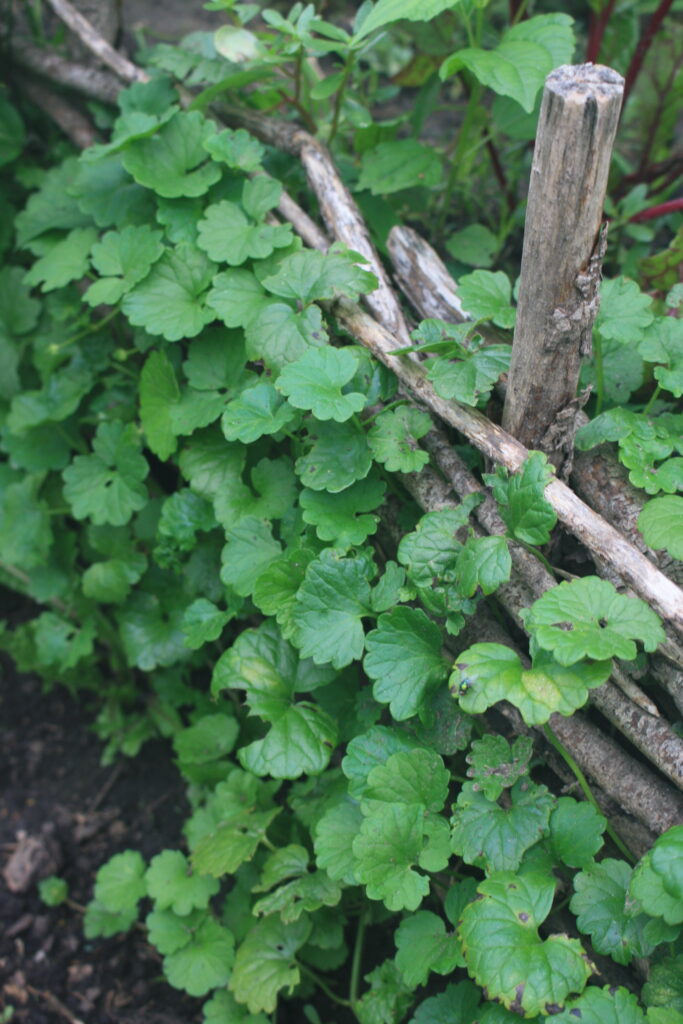
How to Brew a gallon of Low-Alcohol Gruit
So, without further ado, here is a very basic method to brew a small batch of low-alcohol gruit. It is your perfect mid-day thirst slaker! This is a small batch that can made either on the open fire outside or on the stove top in the kitchen. Of course I like doing it on the fire, but sometimes, limited time and convenience demands the modern stove-top. Here’s what you’ll need.
- Hot Water (about 5.6 Liters or one and half gallons)
- Spent grains (about 2 kilos or 2 lbs)
- ground ivy/alehoof (freshly picked and washed)
- ale yeast (If fresh from a packet, then only about a half of the packet. If it is from ale dregs, just a “dollops-worth”. I strongly recommend Norwegian kveik yeast for sure and fast results. You could also conceivably use simple baker’s yeast. However I have not tried that yet.
Equipment you’ll need:
- Large cooking pot (HINT: a gallon mark on the inside of the pot)
- cooking source (either a fire, or an outside burner, or simply the kitchen stove-top)
- metal strainer. Make sure that if can fit deep into your cooking pot.
- cooking thermometer
- gallon glass jug to use as a fermenter.
- air lock that fits on top of the fermenter. If you want to go real cheap you could use a disposable rubber glove!
- flip-top bottles to hold a gallon’s worth.
Gather your Supplies
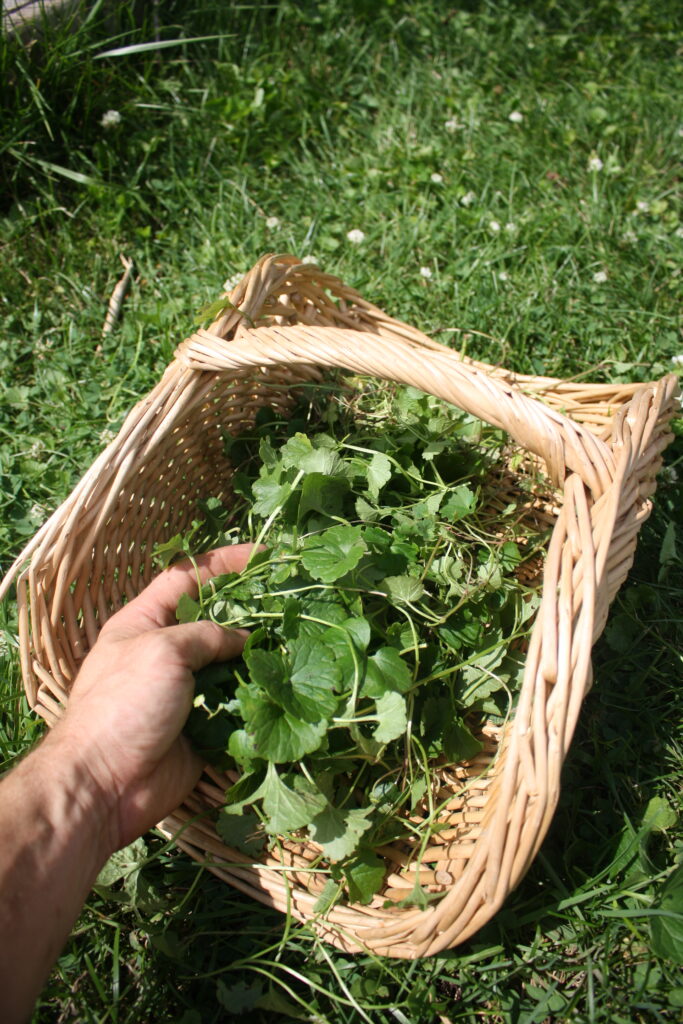
Pick a batch of alehoof. Most likely you won’t have to look far to find it! And don’t be afraid to use plenty. They are not as potent or overpowering in flavor as cultivated hops. Rinse them off thoroughly.
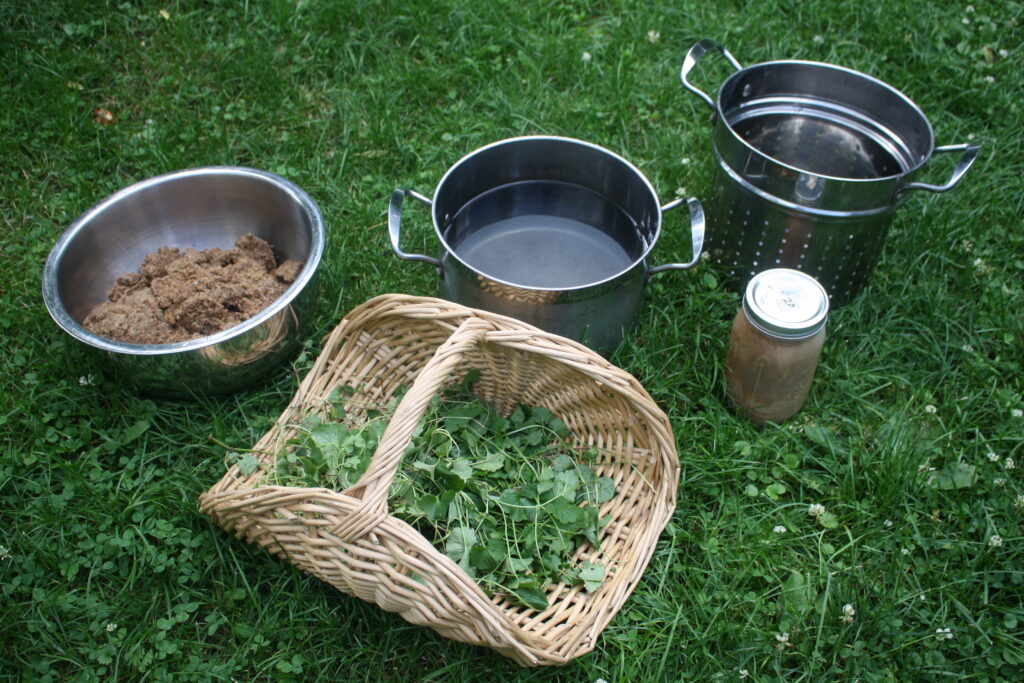
Brewing on a Stove-top
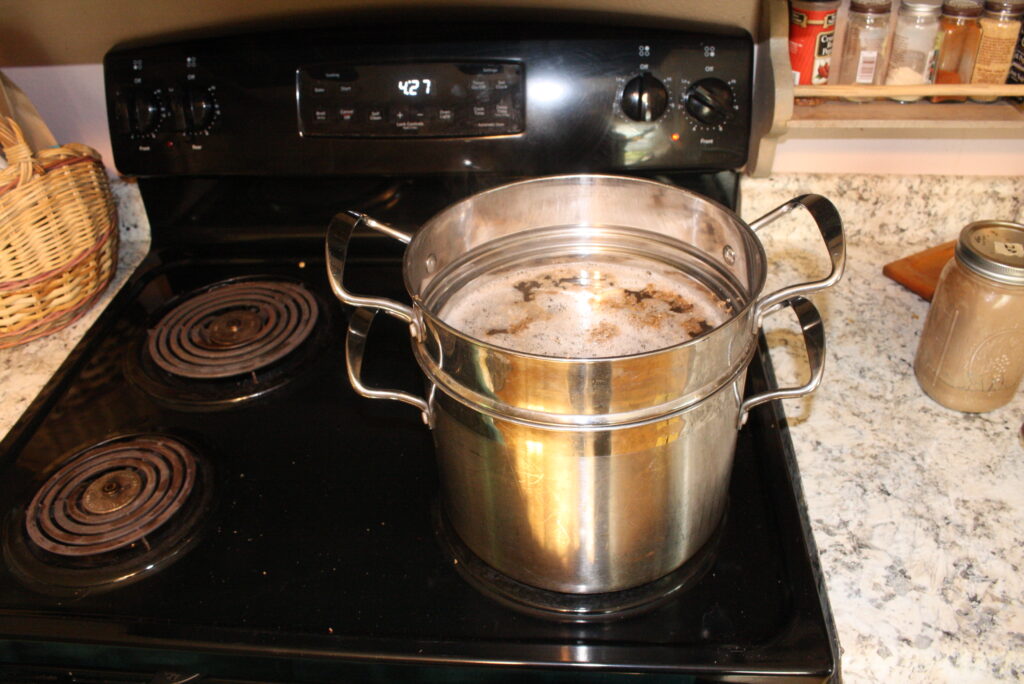
Heat up about a gallon and a half of water on the stove, or as much as will fit in the pot along with the grains without overflowing. You want to start with more water than what you’ll end up with because a bunch will evaporate in the process. Put the spent grains in the metal strainer and steep in the pot. Avoid letting the water boil. In this you are extracting the sugars in the grain. Let the grains steep for a while (say about 1/2 an hour to an hour)
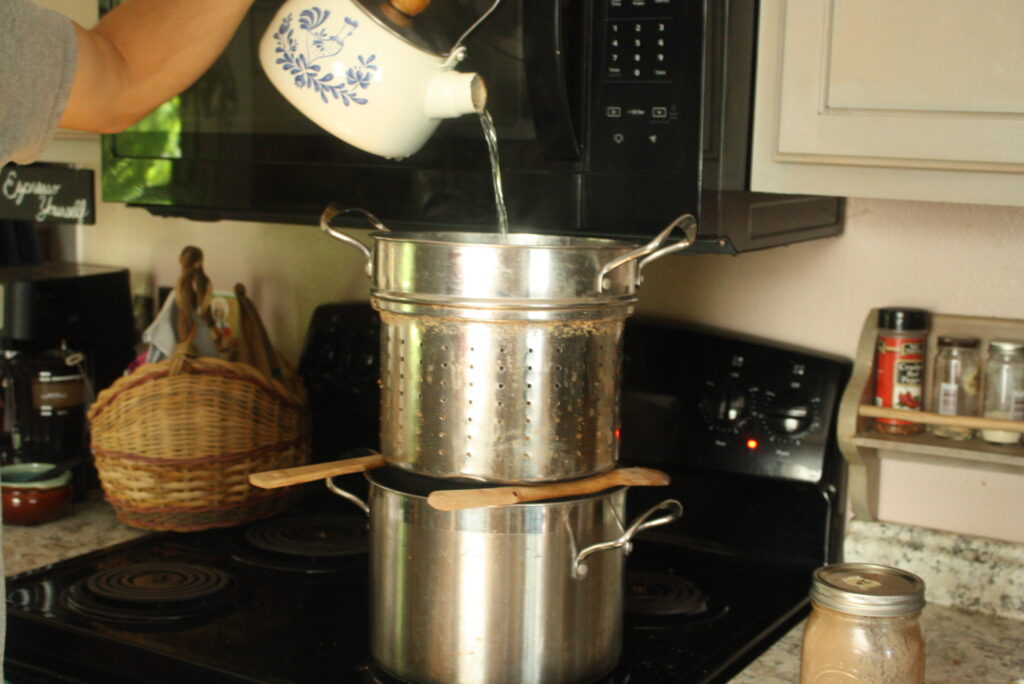
Here is an optional step:
Heat an additional kettle of water. Suspend the strainer with the grains over the pot and gently pour the additional water through the grains to seep down into the main batch. This leaches out any precious residual sugars.
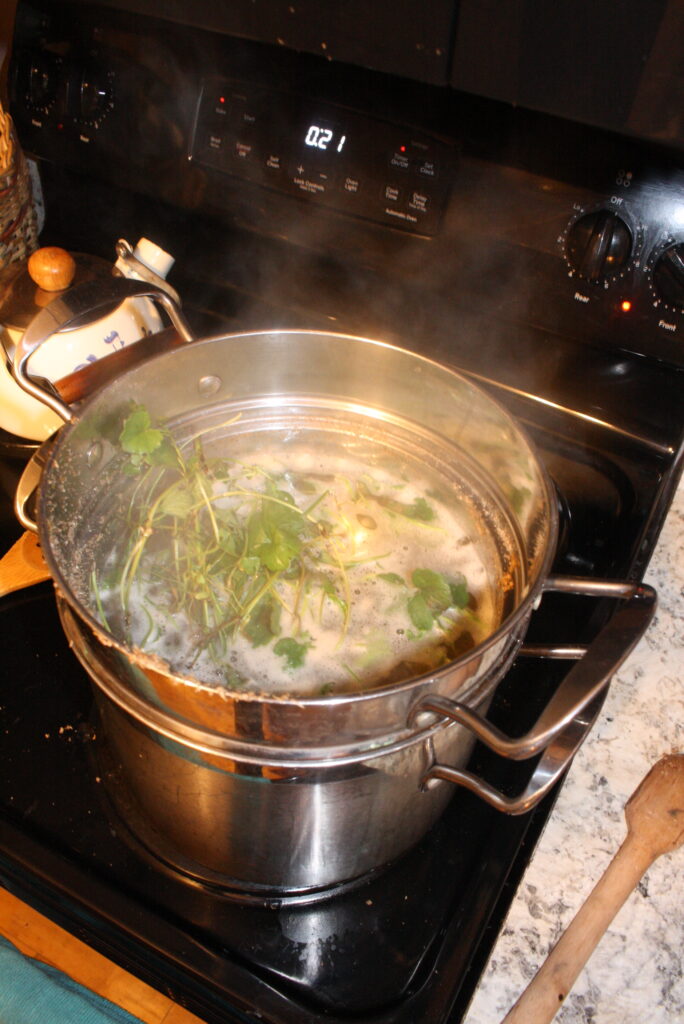
After this, remove your spent grains from the wort. You are done with them now. Throw them to your chickens or in the compost heap! Now put the alehoof in the strainer. Let it steep for a good half hour to an hour. Then remove. Boil the wort down to the gallon mark on your pot.
Cooling and Pitching Yeast
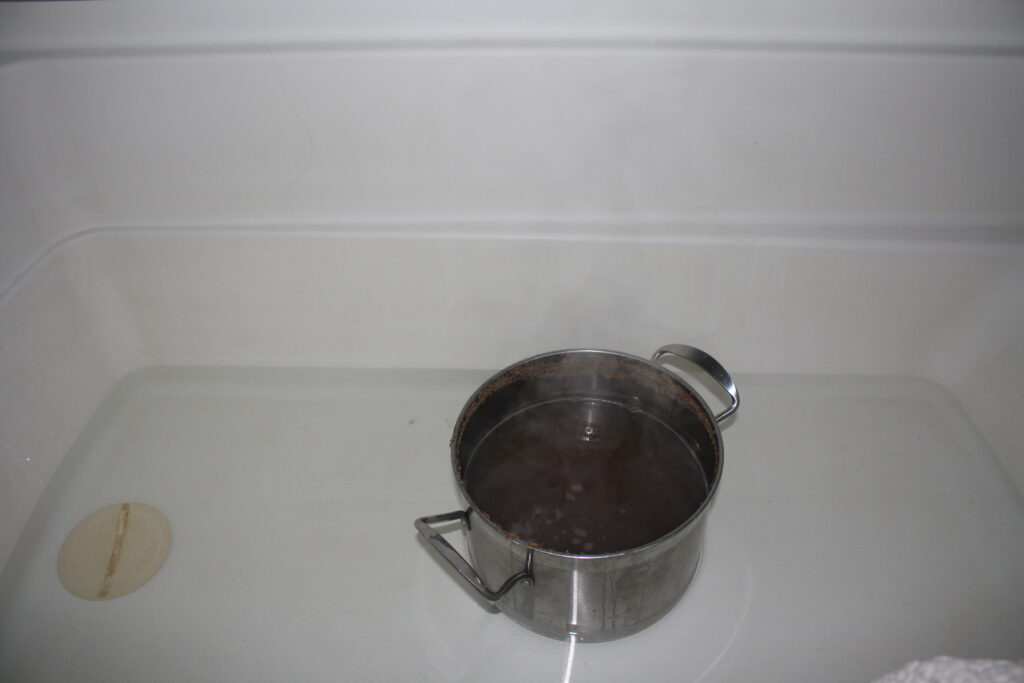
Now it’s time to cool the wort. Do this in the bathtub of cold water and ice.
IMPORTANT:
If you are using standard ale or baker’s yeast, make sure the wort cools down to below 80 degrees Fahrenheit. However, if you are using Norwegian kveik yeast, cool to around the 90-100 degree Fahrenheit range.
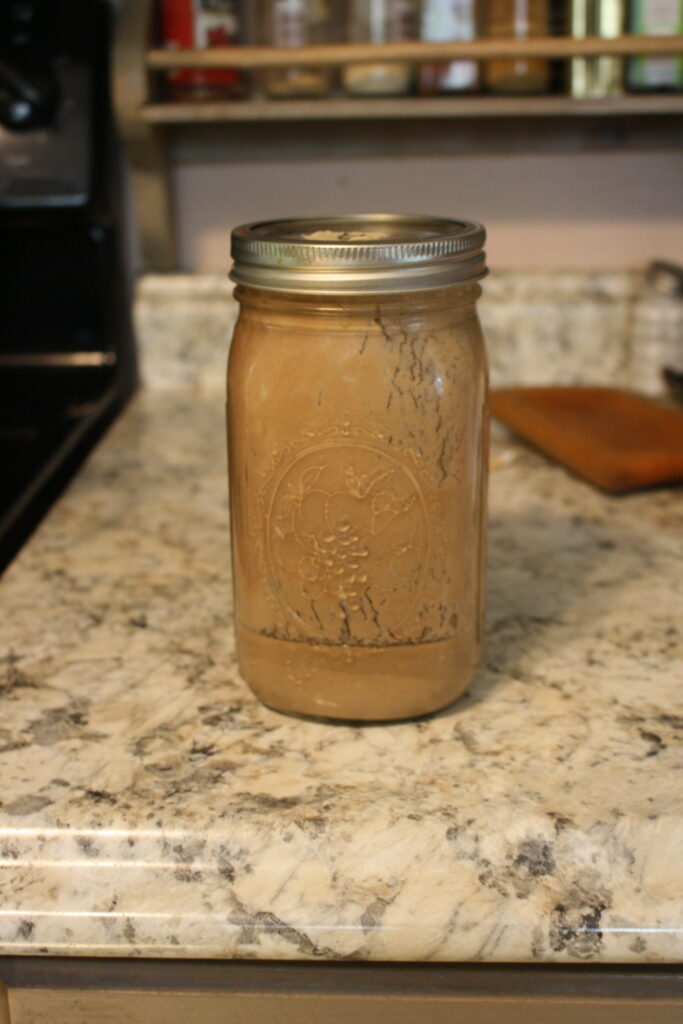
Time to pitch in your yeast. I save mine in a mason jar in the fridge from the dregs of every batch of beer. Slap on an air lock and leave in a warm, dark place. The next day you should see it bubbling.
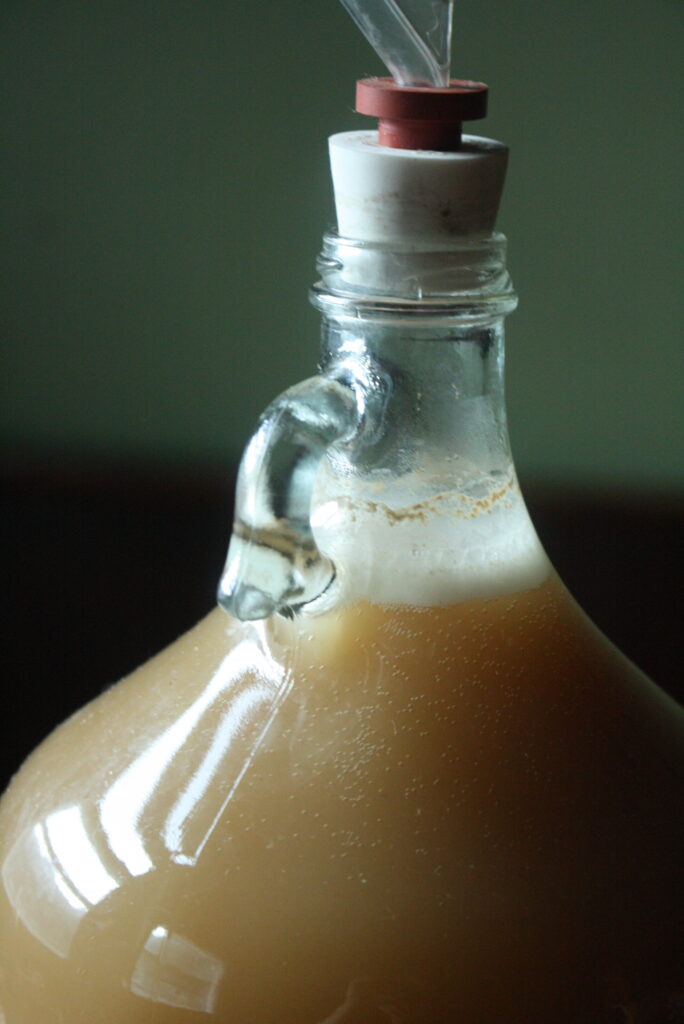
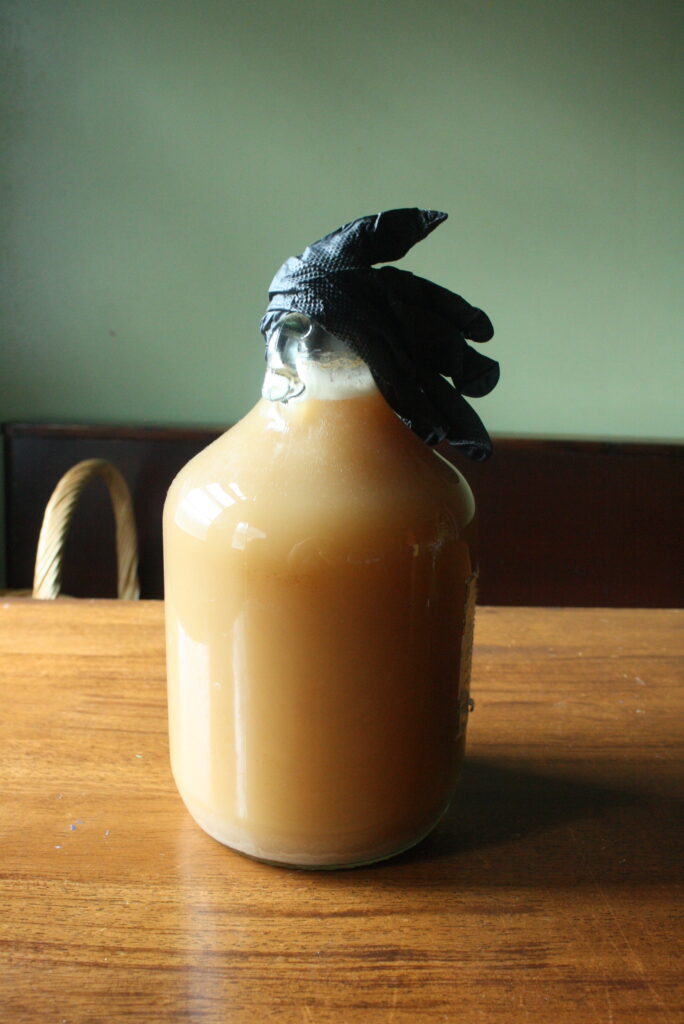
I have used a rubber glove as an airlock before and it works just fine! It’s a good option especially if you don’t have many brewing supplies yet.
Bottling
After a couple days the bubbling has subsided. It is ready and you can drink it as it is. Or if you wish, you can bottle it. If you choose to have it carbonated, add a dash of table sugar into the jug and mix it before you transfer to bottles. Then wait another day or so for the carbonation to build up.
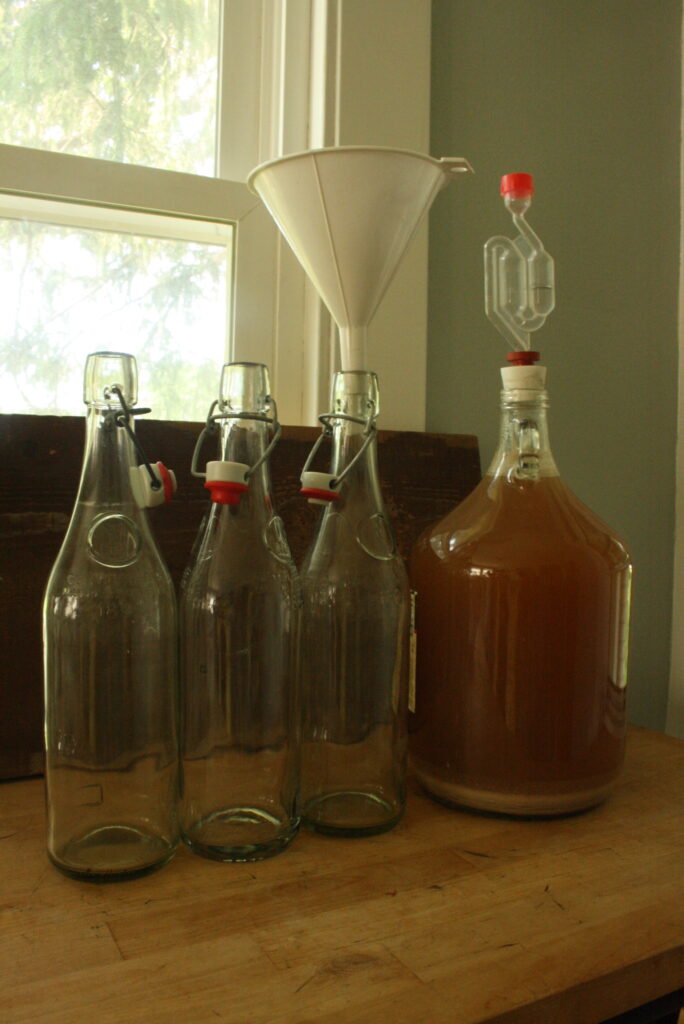
Of course, in true farmhouse-style, there is no standard on how to make a gruit. If you fancy it, try different combinations “gruit-herbs”. Let me know what you think! And if you can get your wife to drink it, then I take my hat off to you!~ Nathanael
To get more in-depth on farmhouse beer brewing, here are some more articles on the subject.


Leave a Reply